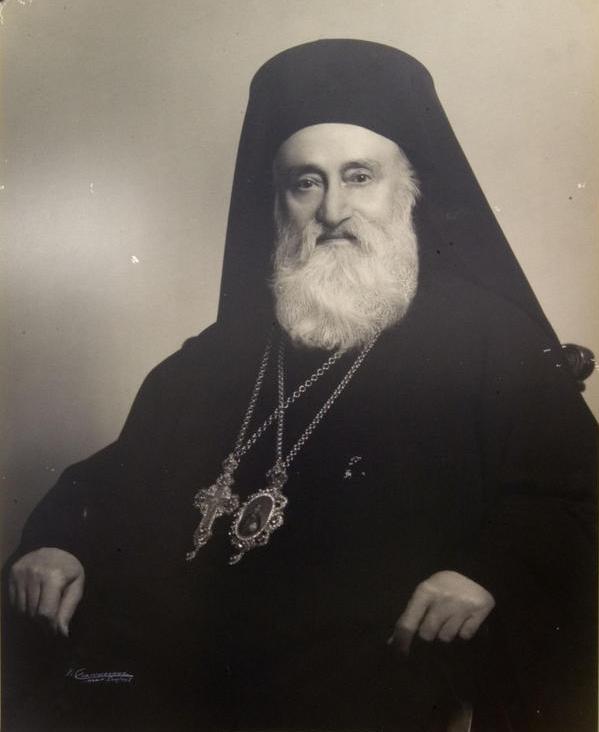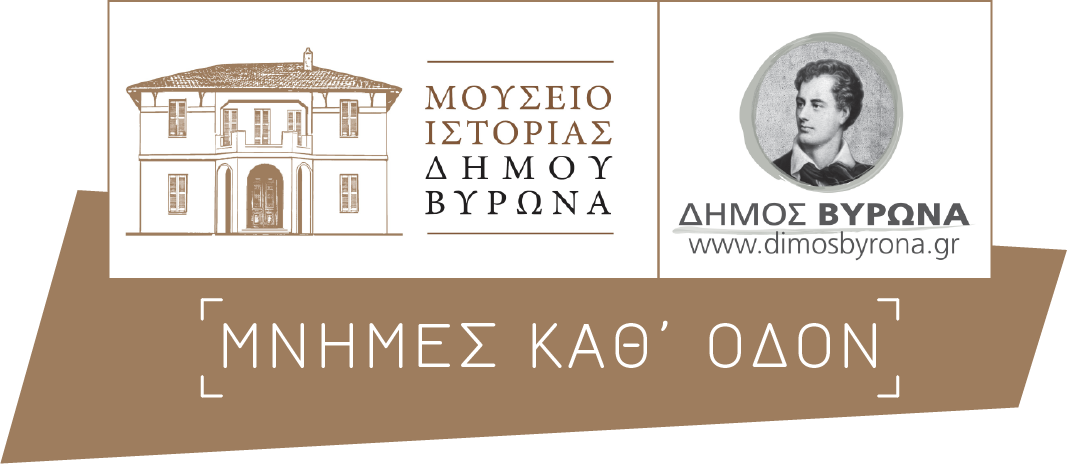Smyrnis square and
Memorial of National Resistance
Smyrnis square, Chrysostomou Smyrnis Avenue

The archbishop Chrysostomos II. [Wikimedia commons]
Smyrnis square, dedicated to the capital city of Ionia, is demarcated by the streets Messolongiou, Voreiou Ipirou, Kyprou and Chrysostomou Smyrnis. Right across the street on Chrysostomou Smyrnis there is the Memorial for the National Resistane, which commemorates the twelve young men who were shot by the Germans during the Blockade of Vyronas against the fence of Morgenthau nursery.
On Smyrnis square stands the prominent statue of Chrysostomos II, archbishop of Athens and Greece (1962-1968). Its inauguration in 1971 constituted a tribute to him for the role he played in the protection of refugees after the expulsion from Asia Minor as well as for his participation at the National Resistance during the German Occupation. On the edge of the square on Kyprou street stands the bust of yet another clergyman, Chrysostomos (Voultsos), Metropolitan Bishop of Nea Smyrni, who spent his childhood and adolescence as an inhabitant of Vyronas. During the Blockade of Vyronas he was arrested and sent to the concentration camp of Haidari. He was placed in charge of the Holy Metropolis of Nea Smyrni shortly after its foundation in 1974 and he served it until his dormition in 1986.
Across the street from the square lies the Memorial for the National Resistance, inaugurated in 1977. It is dedicated to the twelve young men, eleven Greeks and an Italian anti-fascist, who were executed during the Blockade of Vyronas on the 7th of August 1944. The execution spot is located further up the street, against the fence of the “Morgenthau” nursery. Every year, on the 7th of August, a memorial service is held here.
Additional information
The inhabitants of Vyronas were organized in the National Resistance at an early start. In their majority they became members of EPON (Revolutionary Organisation of Youth) and EAM (National Liberation Front). In Vyronas took place several skirmishes and battles during the German Occupation. The greatest day, however, rose on the 7th of August 1944, when two squadrons of Germans along with 800 men of the Security Regiments blockaded part of the city, in retaliation for the murder of a German officer the previous day. They gathered over 1000 men on Smyrnis Square. Many members of the resistance, however, had already escaped to the slopes of Mt. Hymettus, as they had been warned by EAM, the members of which tried to create a diversion in order for the Germans to release the blockade. However, this plan was not successful. The Germans pointed out to 10 young men whom they tortured to make them reveal the name of the person who had killed the officer. Finally, another young man, Panayiotis Kassimatis, stood out and said that he had committed the crime. This did not alleviate the wrath of the Germans. They put all 11 men against the fence of the Morgenthau nursery. Along with the Greeks they also executed a young Italian anti-fascist. The full list of the deceased at the blockade is the following:
Lefteris Mylonas, Giorgos Malamoutis, Kostas Mourikis, Iordanis Keseroglou, Ippokratis Hadjiioannou, Iakovos Merkouriadis, Giorgos Kleidas, Panayiotis Kassimatis, Vangelis Kolitas, Giorgos Diamantopoulos, Manolis Kapitsikos, and the Italian Marcello Baravalle.
Apart from the men executed during the Blockade of Vyronas, there were other losses as well: the Germans took the majority of the people gathered on Smyrnis square, about 600 men, to the concentration camp of Haidari. At least 300 of them were transferred to Germany, where they were submitted to forced labour in factories, as workers were sparse due to the war. Most of them returned after the peace treaty of 1945, whereas some of them recorded their days as hostages on diaries and other documents. It is true that they were luckier than other hostages who were sent to Germany earlier, after 1942, and imprisoned in concentration camps, like Mauthauzen, described so vividly by the Vyroniot author Iakovos Kambanellis.
- Proclamation of EAM to solve the food problem during the Occupation of Greece
- Evidence of the resistance action of the inhabitants of Vyronas and neighboring areas


